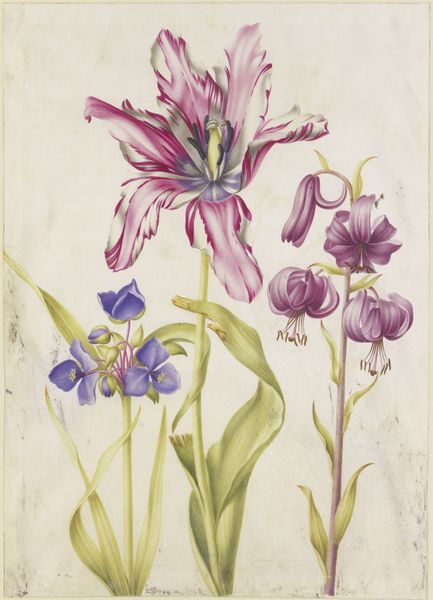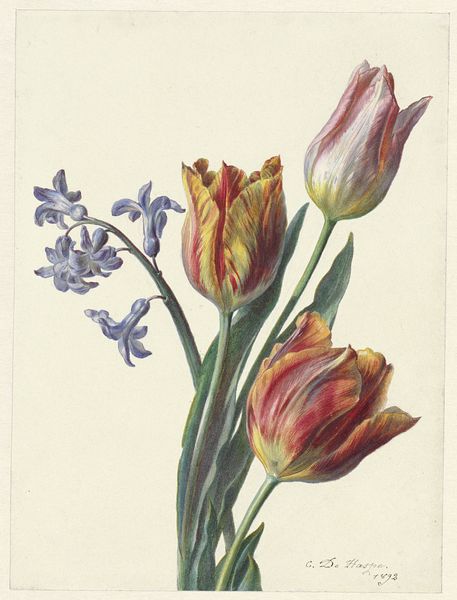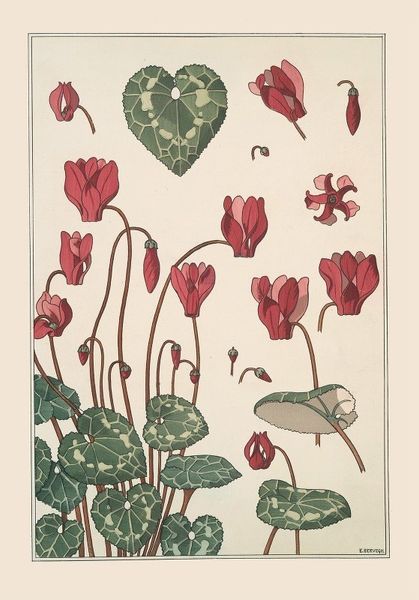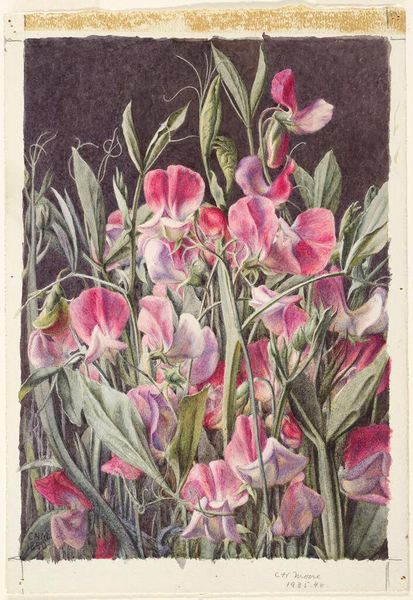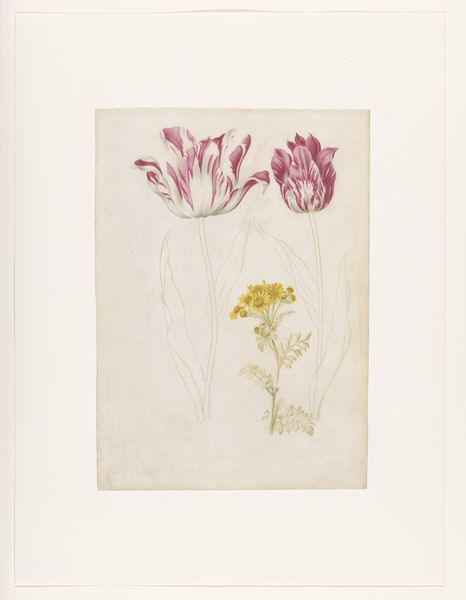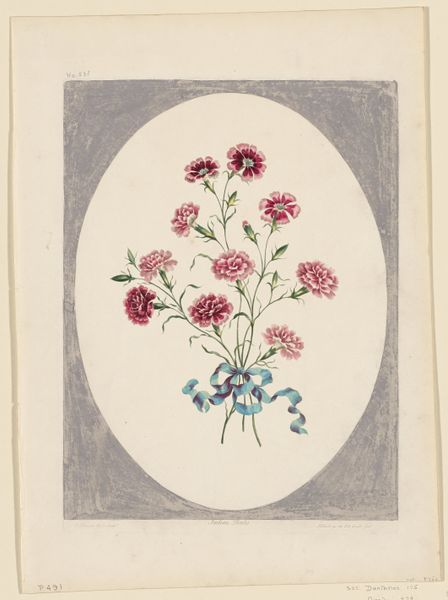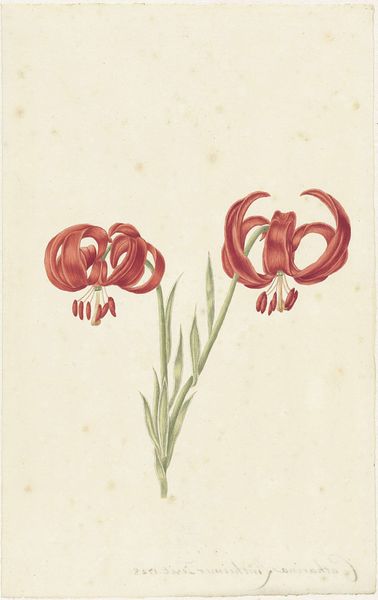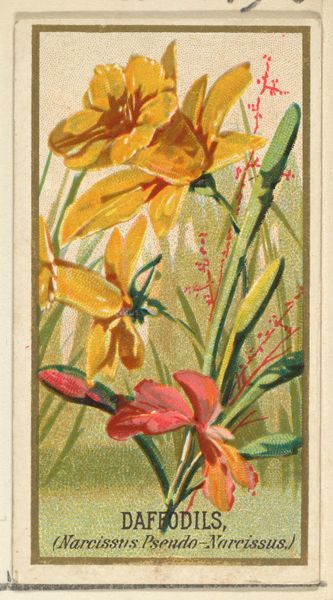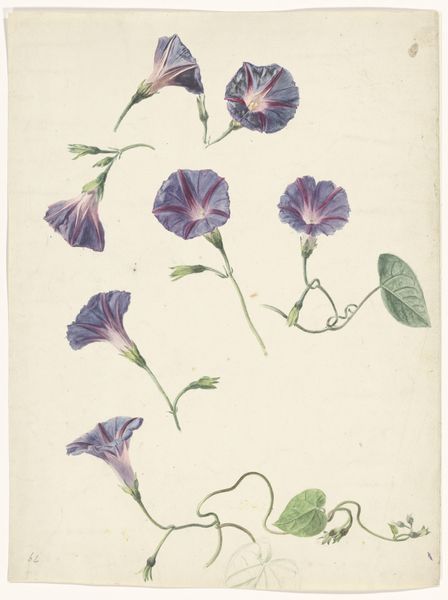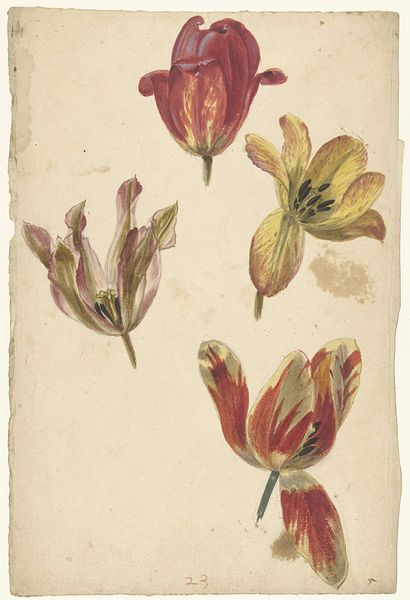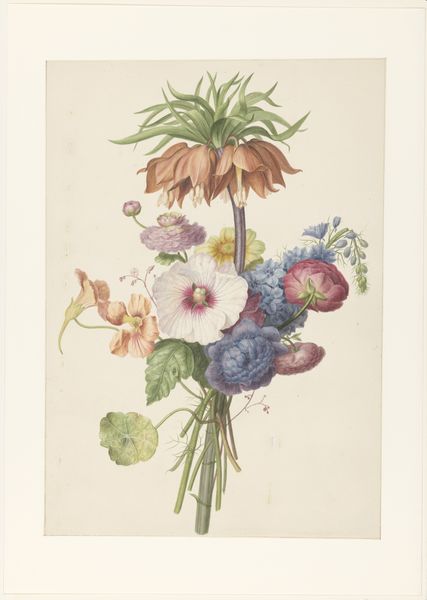
print, linocut, woodblock-print
# print
#
linocut
#
flower
#
linocut print
#
woodblock-print
Dimensions: height 418 mm, width 323 mm
Copyright: Rijks Museum: Open Domain
Curator: Dinah Kohnstamm created this striking print, "Lissen en andere bloemen," sometime between 1879 and 1935. It’s a vibrant explosion of color and form rendered in linocut. Editor: My initial impression is one of boldness and raw texture. The deep purple of the irises against the intense red of the smaller blossoms creates a visually arresting contrast, heightened by the unrefined edges characteristic of linocut. It almost feels Fauvist in its disregard for naturalistic color. Curator: Kohnstamm's work can be viewed through the lens of early 20th-century Dutch art, a time of great social change and the rise of feminist consciousness. The very act of a woman producing and exhibiting such art was a political statement. These floral motifs, traditionally associated with domesticity, become subversive when reinterpreted by a female artist. Editor: Interesting point. But let’s also examine the composition itself. Notice how the verticality of the iris stems is countered by the massing of the lower flowers. The positive and negative spaces interact dynamically, creating an almost rhythmic visual cadence. There’s a clear hierarchy established through scale and placement. Curator: Absolutely, and considering the period, the bold use of color can be seen as a rejection of more subdued, traditional palettes. The directness of the linocut medium allowed Kohnstamm to circumvent established artistic hierarchies, giving voice to marginalized experiences. Floral representation wasn't merely decorative. It could also be seen to comment on concepts such as the gaze, vulnerability, and freedom in relation to the societal understanding of women at the time. Editor: Yes, but let’s not overlook the pure abstraction present here. Look closely at how the artist has rendered the individual petals, or the varied pressures in creating the lines; there's an engagement with surface and pattern that transcends mere representation. Each line conveys purpose. There’s an exploration of visual language happening here, using floral form as pretext. Curator: By placing Kohnstamm’s work within its social and historical context, we reveal not only the formal beauty of the piece but also the deeply resonant dialogue it enters into with themes of identity, gender, and social change. Editor: And by focusing on the composition, materiality and visual relationships we access another level of the artist’s language—appreciating the complex tensions embedded within the visual design. It allows us to fully decode the depth and intention in her work.
Comments
No comments
Be the first to comment and join the conversation on the ultimate creative platform.
